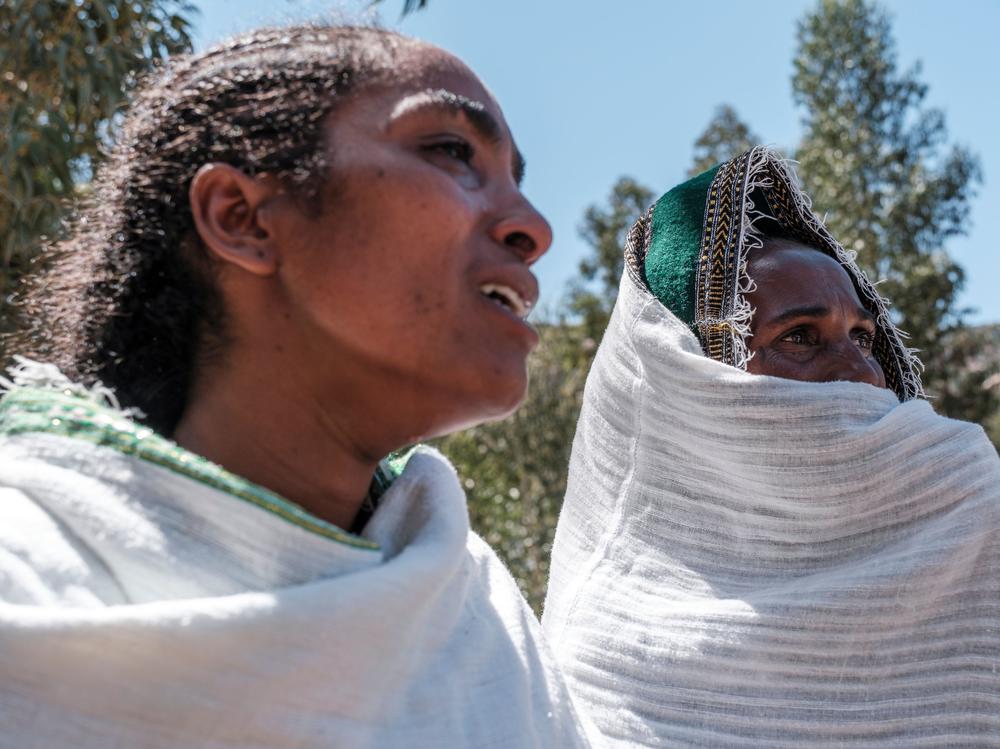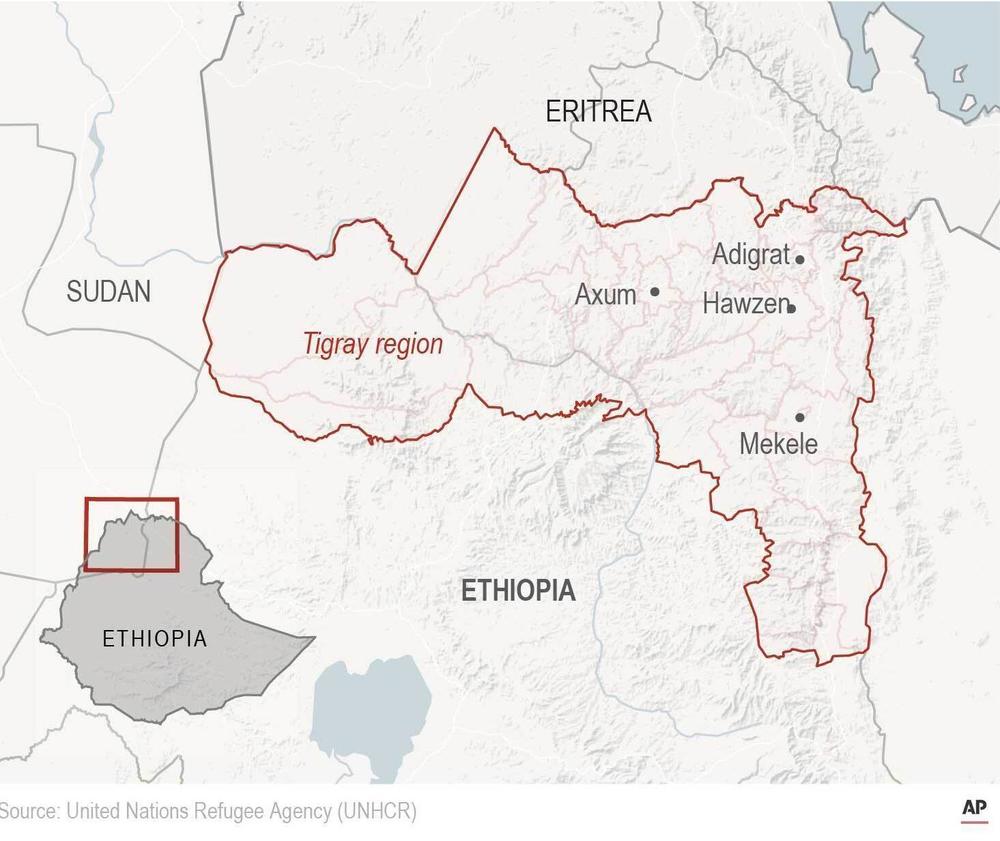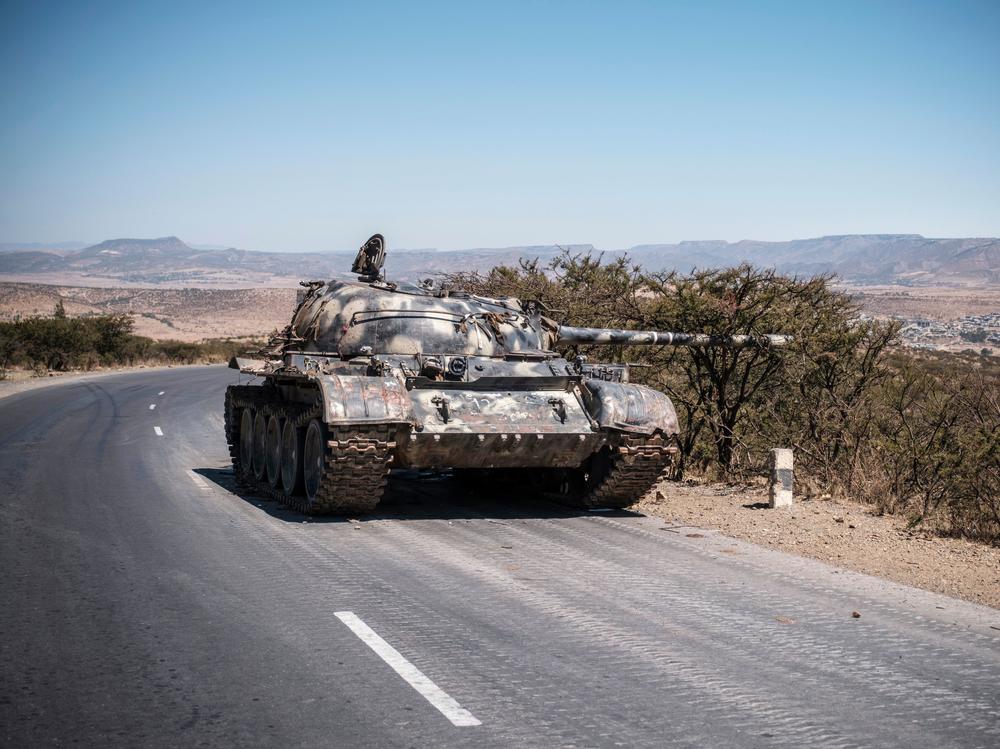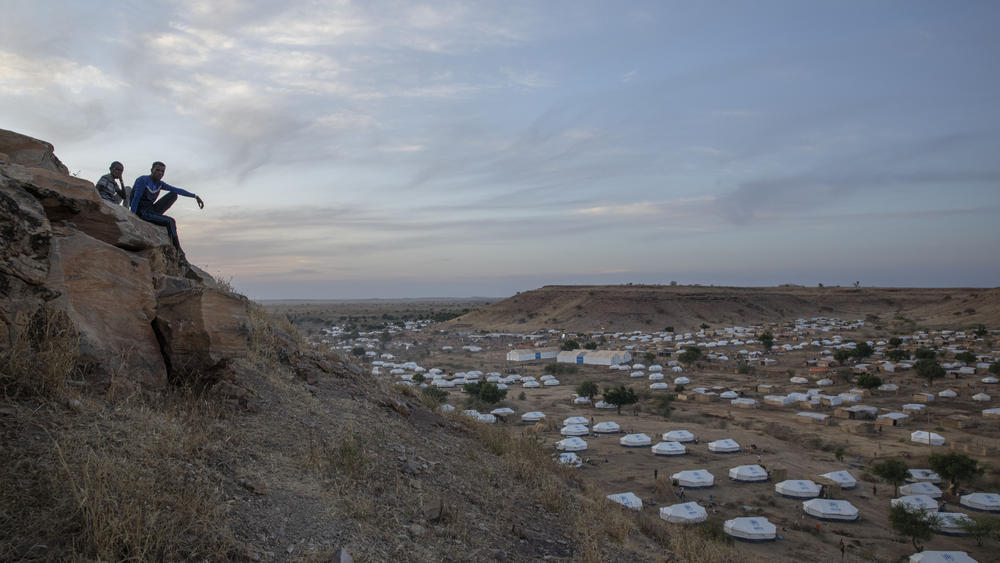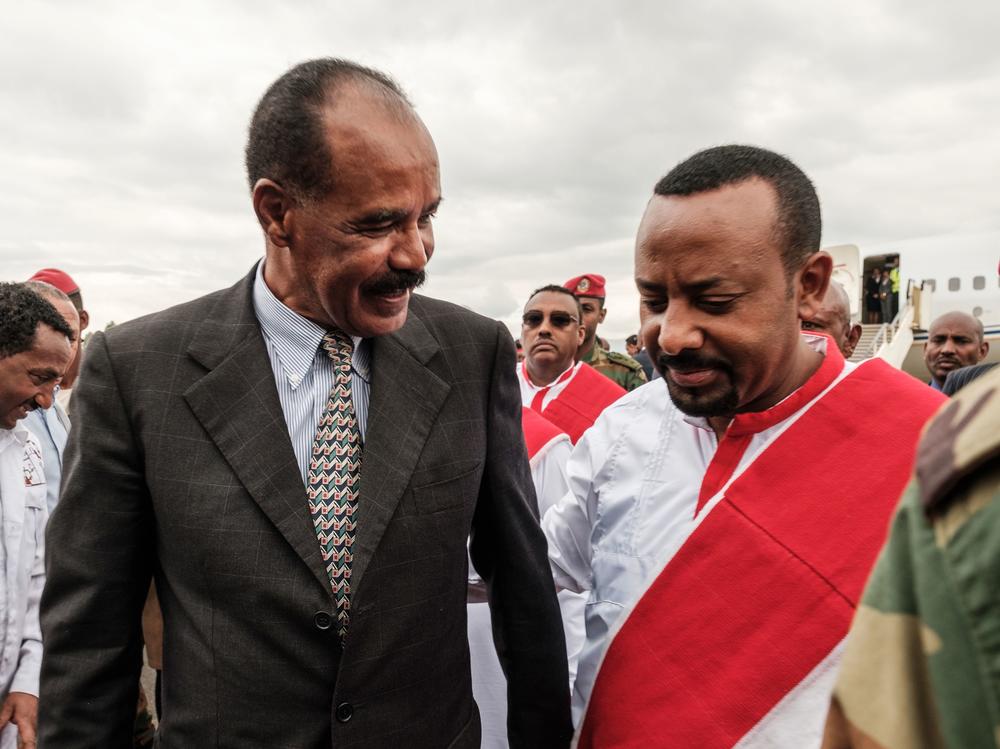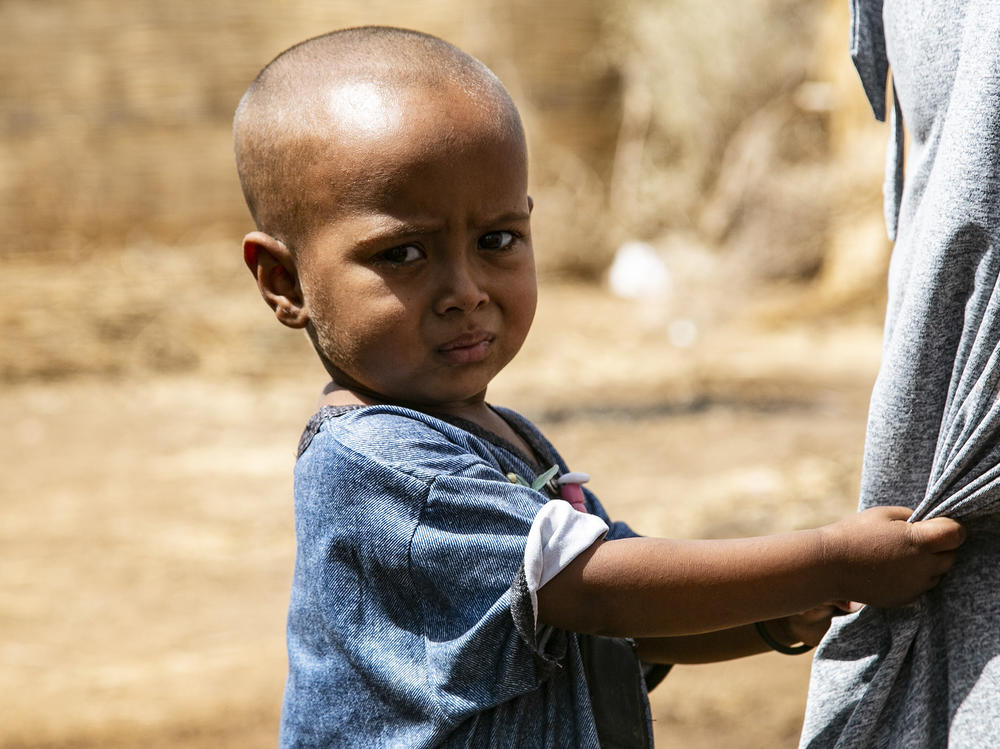Section Branding
Header Content
9 Things To Know About The Unfolding Crisis In Ethiopia's Tigray Region
Primary Content
For months, a conflict in Ethiopia between the government in Addis Ababa and a defiant region has cost thousands of lives and displaced at least a million people.
Despite the increasing brutality of the conflict in Tigray, until now, it has been largely overlooked by the outside world. But attention and concern is growing with news of alleged atrocities and a worsening refugee crisis.
We've put together nine things you should know about the situation in the Horn of Africa.
Where is Tigray and what is going on there?
Tigray is Ethiopia's northernmost region. Bordering Eritrea, it is home to most of the country's estimated 7 million ethnic Tigrayans. The ethnic group, which accounts for about 6% of Ethiopia's population, have had an outsized influence in national affairs.
In early November, the regional government — controlled by the Tigray People's Liberation Front, a leftist political party — launched a full-scale siege of a key Ethiopian military base at Sero, using tanks, heavy guns and mortars.
Calling the TPLF assault a "treason that will never be forgotten," Ethiopian Prime Minister Abiy Ahmed ordered a federal offensive against the region, setting off the conflict.
How bad is the humanitarian crisis?
Bad. But the scope of the problem is still unclear. The United Nations says the humanitarian community has been largely unable to get outside the major cities, such as the regional capital of Mekele, to see what's happening in the countryside.
So far, the conflict has killed thousands of people, many of whom allegedly died as a result of indiscriminate shelling of cities in Tigray by Ethiopian forces. A local official told Reuters in January that more than two million people have been displaced by fighting, far exceeding previous estimates. The conflict also threatens a regional humanitarian disaster.
In January, the U.N. refugee agency said some 56,000 people had fled the fighting in Tigray, many of whom have ended up in neighboring Sudan.
Last month, The New York Times published a story citing an internal U.S. government report that described a systematic campaign of ethnic cleansing in Tigray.
Fighters supporting Addis Ababa's side in the conflict were "deliberately and efficiently rendering Western Tigray ethnically homogeneous through the organized use of force and intimidation," the Times quoted from the report, which also said that, "Whole villages were severely damaged or completely erased."
What is the Tigray People's Liberation Front?
The TPLF originally formed in the 1970s to push for Tigrayan self-determination, a goal it later moved away from. In a remarkable twist, it eventually found itself at the center of national politics. It became the dominant player in a coalition of ethnic political parties known as the Ethiopian People's Revolutionary Democratic Front, or EPRDF, which led Ethiopia's government for nearly three decades.
Abiy came to power in 2018 as the head of the EPRDF. But a year later, he dissolved the party, saying he hoped to put the party's history of ethnic divisiveness behind it. Instead, Abiy sought to fold the EPRDF's constituents into a new political party. But the TPLF refused to go along, instead retreating to its power base in Tigray, where it enjoys widespread support.
What led up to the current conflict?
After it was sidelined at the national level, the TPLF was accused by Abiy's government of seeking to destabilize Ethiopia by orchestrating ethnic violence across the country.
Abiy had promised to hold the country's first truly democratic elections last summer. However, citing the COVID-19 pandemic, he postponed them.
The TPLF said that delaying the vote amounted to an unconstitutional extension of Abiy's presidential term. The group then held its own regional elections anyway, claiming a decisive win. Abiy's government subsequently declared the Tigray elections invalid.
The two sides called each other illegitimate in the lead-up to the TPLF attack on the Sero base. In response, the government sent the Ethiopian National Defense Forces, backed by soldiers from the Amhara region, which borders Tigray.
Who has the upper hand in the fighting?
After fighting commenced in November, the Ethiopian National Defense Forces quickly captured many of Tigray's main cities, including the regional capital, Mekele, with approximately a half-million people. Abiy declared the main phase of the conflict over; however, the TPLF still controls large swaths of Tigray. Ethiopia has said it is waging a "final offensive" against the group.
What role has Eritrea played?
Eritrea, which was once part of Ethiopia, fought and won a brutal, decades-long war of independence that ended in 1991. The two countries went to war again in 1998 in a territorial conflict that ended inconclusively in 2000, claiming an estimated 100,000 lives.
However, shortly after taking office, Abiy reached out to Eritrean President Isaias Afwerki, and the two forged a historic peace accord aimed at putting the countries' mutual enmity in the past. Abiy won the Nobel Peace Prize in 2019 for his efforts to resolve the long-standing conflict.
Abiy appears to have won a staunch ally in Isaias. Eritrean forces are reportedly engaged in the Tigray fight, backing Ethiopia. The Associated Press reported that Eritrean soldiers were involved in a massacre of civilians in the town of Axum in the early days of the conflict. Amnesty International has also blamed Eritrea for the mass killing at Axum. Eritrean forces also reportedly carried out a similar attack on civilians at a church in the Tigrayan town of Dengelat.
Both governments have denied that Eritrean troops are even in Ethiopia. In an interview with state media last month, Isaias didn't comment on the presence of Eritrean forces in Tigray, but he appeared to hint at it. He expressed concern over the Tigray situation and said Eritrea was "trying our level best" to help Ethiopia "in accordance to our obligation," the BBC reported.
Abiy, speaking to parliament in November, called the Eritrean people "our brothers," and friends "who stood by our side on a tough day."
What does the U.N. say?
The U.N. High Commissioner for Human Rights, Michelle Bachelet, has asked Ethiopia for access to Tigray to investigate possible war crimes there, after reports of extrajudicial killings and sexual violence.
Bachelet says her office has verified some atrocities in Tigray, including ones committed by Eritrean forces, as well as the "indiscriminate shelling in Mekele, Humera and Adigrat towns in Tigray region."
What has the U.S. said?
The Biden administration describes the situation in Tigray as "a deepening humanitarian crisis."
Secretary of State Antony Blinken, citing "credible reports" of human rights abuses, has pressed Addis Ababa to end the conflict, State Department spokesperson Ned Price said.
"The secretary urged the Ethiopian government to take immediate, concrete steps to protect civilians, including refugees, and to prevent further violence," he said in a statement.
The Biden administration has repeatedly called for the immediate withdrawal of Eritrean soldiers and Amhara regional forces. It has also asked for the African Union to help resolve the crisis.
Echoing comments made by Blinken, Linda Thomas-Greenfield, the U.S. ambassador to the U.N., said "The onus to prevent further atrocities and human suffering falls squarely on the Ethiopian government shoulders."
"We urge the Ethiopian government to support an immediate end to the fighting in Tigray," she said. "To that end, the prompt withdrawal of Eritrean forces and Amhara regional forces from Tigray are essential steps, and we urge the broader region to work fast and together toward a peaceful solution."
What is at stake in the conflict?
With the apparent involvement of Eritrea, and a flood of refugees into Sudan, the situation threatens to become both a wider conflict and a deepening humanitarian crisis in a part of the world that has seen more than its share of human misery in recent decades.
For Abiy, the Nobel laureate, and Eritrea's Isaias, their reputations as peacemakers have taken a severe hit. Allegations of atrocities and possible war crimes could effectively end whatever international good will they enjoyed.
Meanwhile, for President Biden, the conflict could prove a difficult balancing act.
On the one hand, the Biden administration has shown an eagerness to reassert the U.S.'s role as an international champion of human rights, after such considerations took a back seat under former President Donald Trump.
But by shunning Addis Ababa, the administration would risk decades of close U.S.-Ethiopia ties and cooperation in fighting regional terrorism. Since the end of its conflicts with Eritrea, Ethiopia has played a stabilizing role in the Horn of Africa region — most notably making up the backbone of the African Union Mission in Somalia, where peacekeeping forces have sought to tamp down a resurgence of the Islamist insurgent group al-Shabab.
Copyright 2021 NPR. To see more, visit https://www.npr.org.
